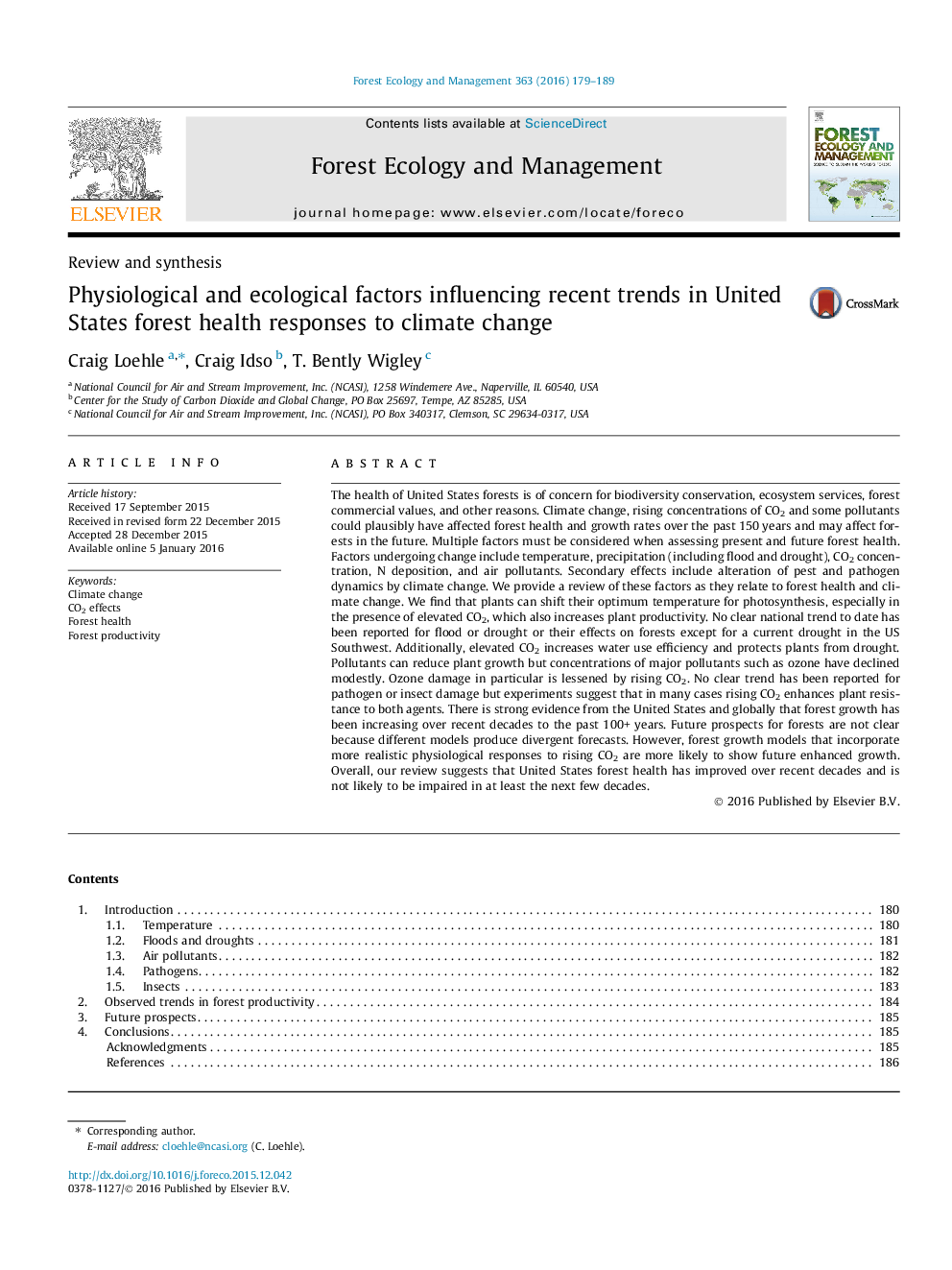| کد مقاله | کد نشریه | سال انتشار | مقاله انگلیسی | نسخه تمام متن |
|---|---|---|---|---|
| 86004 | 159157 | 2016 | 11 صفحه PDF | دانلود رایگان |
• We review information on US forest health in response to climate change.
• We found that trees are tolerant of rising temperatures and have responded to rising carbon dioxide.
• No long-term trends in US drought have been found in the literature.
• CO2 tends to inhibit forest pests and pathogens.
• Projections of forest response to climate change are highly variable.
The health of United States forests is of concern for biodiversity conservation, ecosystem services, forest commercial values, and other reasons. Climate change, rising concentrations of CO2 and some pollutants could plausibly have affected forest health and growth rates over the past 150 years and may affect forests in the future. Multiple factors must be considered when assessing present and future forest health. Factors undergoing change include temperature, precipitation (including flood and drought), CO2 concentration, N deposition, and air pollutants. Secondary effects include alteration of pest and pathogen dynamics by climate change. We provide a review of these factors as they relate to forest health and climate change. We find that plants can shift their optimum temperature for photosynthesis, especially in the presence of elevated CO2, which also increases plant productivity. No clear national trend to date has been reported for flood or drought or their effects on forests except for a current drought in the US Southwest. Additionally, elevated CO2 increases water use efficiency and protects plants from drought. Pollutants can reduce plant growth but concentrations of major pollutants such as ozone have declined modestly. Ozone damage in particular is lessened by rising CO2. No clear trend has been reported for pathogen or insect damage but experiments suggest that in many cases rising CO2 enhances plant resistance to both agents. There is strong evidence from the United States and globally that forest growth has been increasing over recent decades to the past 100+ years. Future prospects for forests are not clear because different models produce divergent forecasts. However, forest growth models that incorporate more realistic physiological responses to rising CO2 are more likely to show future enhanced growth. Overall, our review suggests that United States forest health has improved over recent decades and is not likely to be impaired in at least the next few decades.
Journal: Forest Ecology and Management - Volume 363, 1 March 2016, Pages 179–189
